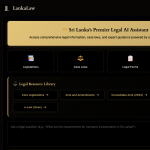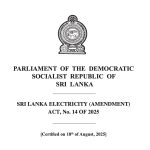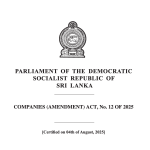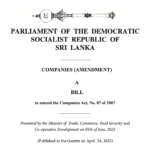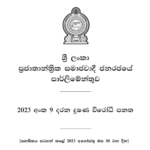Time limitations regarding applications for relief following employment termination have become critical in industrial law. These limits are designed to ensure timely recourse while preventing administrative delays. This article examines the evolution of time limits in Sri Lanka, their implications for employees and employers, and proposes recommendations for reform to address existing challenges.
Historical Context
Initially, relief for employment termination was sought through civil courts under common law, primarily for breach of contract. However, the establishment of Labour Tribunals marked a significant shift, as these specialized bodies assumed jurisdiction over such disputes, reducing reliance on civil courts. Labour Tribunals initially operated without any fixed application deadlines. Attempts to impose deadlines faced challenges, such as the invalidation of a three-month limit regulation on the grounds of being ultra vires, as evidenced in Rambanda v River Valleys Development Board (71 NLR 25).
Legislative Developments
The introduction of statutory time limits was a pivotal development in ensuring procedural clarity and fairness:
- Act No. 53 of 1973: Imposed a six-month application limit for filing cases in Labour Tribunals.
- Act No. 14 of 2003: Reduced the application limit to three months, effective January 1, 2004.
The reduction in time limits sparked considerable debate, particularly concerning its applicability to terminations that occurred before January 1, 2004. Two interpretations emerged: one arguing the amendment lacked retroactive effect, thereby allowing a six-month period, and another asserting that applications made post-2004 must adhere to the new three-month limit.
Similarly, the Termination of Employment of Workmen (Special Provisions) Act No. 45 of 1971 initially did not impose any time constraints for complaints to the Commissioner of Labour. However, Act No. 51 of 1988 introduced a six-month limit for filing such complaints.
For civil court actions, the Prescription Ordinance mandates that lawsuits must be filed within one year of the contract’s termination.
Current Anomalies
Despite the existence of statutory time limits, certain practices and provisions have led to inconsistencies and legal loopholes:
- Ministerial Discretion in Arbitration Section 4(1) of the Industrial Disputes Act grants the Minister of Labour the authority to refer “minor disputes” for compulsory arbitration. This provision has been broadly interpreted to include termination disputes. However, the term “minor disputes” remains undefined within the Act, enabling its application to cases of termination without adherence to statutory time limits. Such referrals often occur years after the termination, undermining the objectives of timely dispute resolution. For example, a case involving the Ceylon Petroleum Corporation saw arbitration initiated nine years after the employee’s termination. These practices not only contradict the intent of statutory deadlines but also introduce administrative inequities.
- Human Rights Commission Complaints The Human Rights Commission of Sri Lanka Act No. 11 of 1996allows employees of statutory bodies and corporations to file complaints regarding employment terminations as violations of human rights. These complaints are frequently made years after the termination, bypassing statutory deadlines. The Human Rights Commission often adopts a sympathetic stance toward such complaints, issuing recommendations that would not be permissible under traditional labor statutes. This provides an alternative avenue for employees who miss statutory deadlines, undermining uniformity in labor law enforcement.
Broader Implications
The existing anomalies have far-reaching consequences for labor law enforcement and industrial relations:
- Legal Uncertainty: Divergent interpretations of time limits and alternative remedies create confusion among stakeholders.
- Administrative Delays: Allowing cases to proceed years after termination burdens arbitration mechanisms and delays justice.
- Erosion of Statutory Intent: Circumventing time limits through administrative provisions or alternative forums dilutes the integrity of labor legislation.
Recommendations for Reform
To address these inconsistencies and enhance the efficacy of labor law enforcement, the following measures are proposed:
- Clarify Ministerial Powers: Amend the Industrial Disputes Act to define “minor disputes” explicitly and limit the scope of ministerial referrals for arbitration.
- Standardize Time Limits: Extend statutory deadlines to encompass complaints filed with the Human Rights Commission, ensuring uniformity across all legal and administrative forums.
- Strengthen Legislative Oversight: Introduce robust legislative amendments to close loopholes that allow circumvention of prescribed time limits, ensuring consistency and fairness.
- Enhance Public Awareness: Conduct awareness campaigns to educate employees and employers about statutory deadlines and their implications for seeking relief.
Conclusion
Time limits for employee relief applications are essential for maintaining procedural integrity and ensuring timely dispute resolution. However, current inconsistencies and legal ambiguities undermine these objectives, leading to unequal outcomes and administrative inefficiencies. Legislative reforms, coupled with enhanced clarity and uniformity, are imperative to uphold the principles of legal certainty and fairness in labor law.

